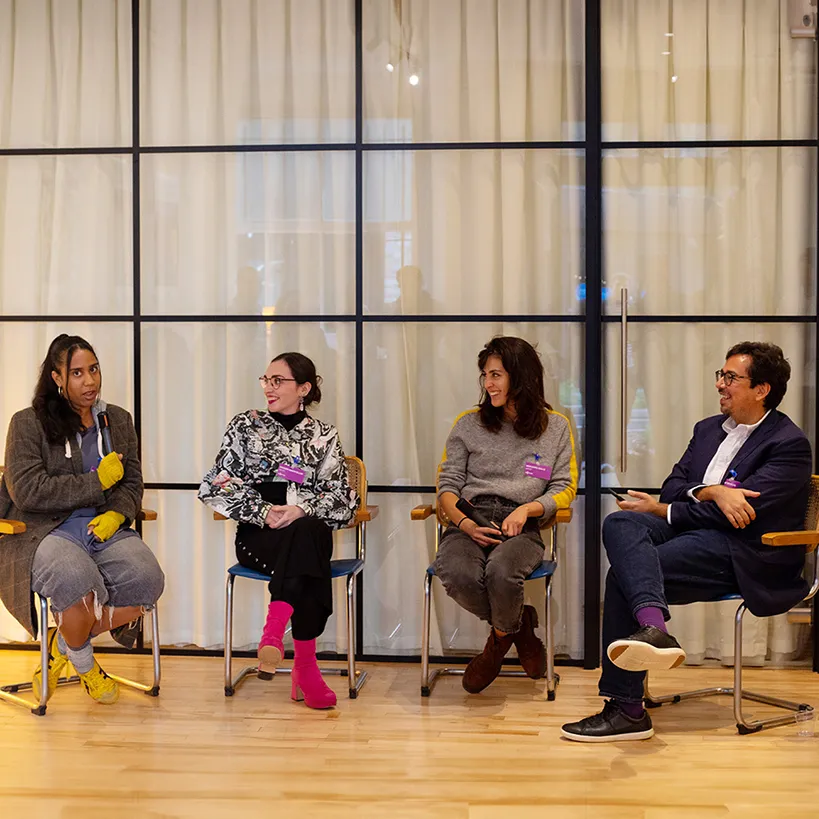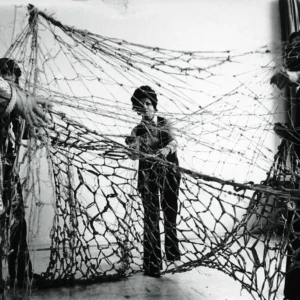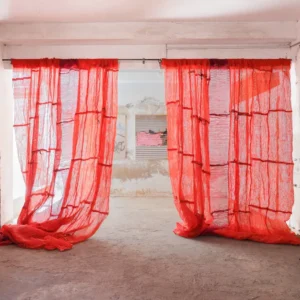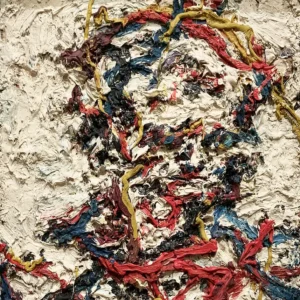Zarastro Art’s artist panel held in London in October 2024 featured Eilen Itzel Mena, Imogen Marsteller, and Mercedes Balle, offering participants a unique opportunity to engage with three exceptional women artists, each sharing their distinct approaches to storytelling through art.
Moderator: Can each of you share your personal story or experiences that significantly influenced your artistic practice?
IM: A pivotal experience in my art journey was when I went to Iceland for an artist residency right after graduating. At that time, my work was at an interesting point—I had always used just one color per painting, either all blue or all red. As an untrained painter, I thought this was the only way to ensure the tones were correct.
In Iceland, the residency director asked, “Why do you only use one color?” I admitted it was because I did not feel skilled enough to handle multiple colors. She told me that was ridiculous and pointed out that I was already making tons of paintings. This conversation was a revelation—it made me question my self-imposed limitations.
I began embracing color, realizing I loved it, just as I did in my wardrobe and home. Now, color is central to my work—a transformation that happened just four years ago, all because of one simple conversation. I am so grateful for that moment; it completely shifted my perspective on painting.
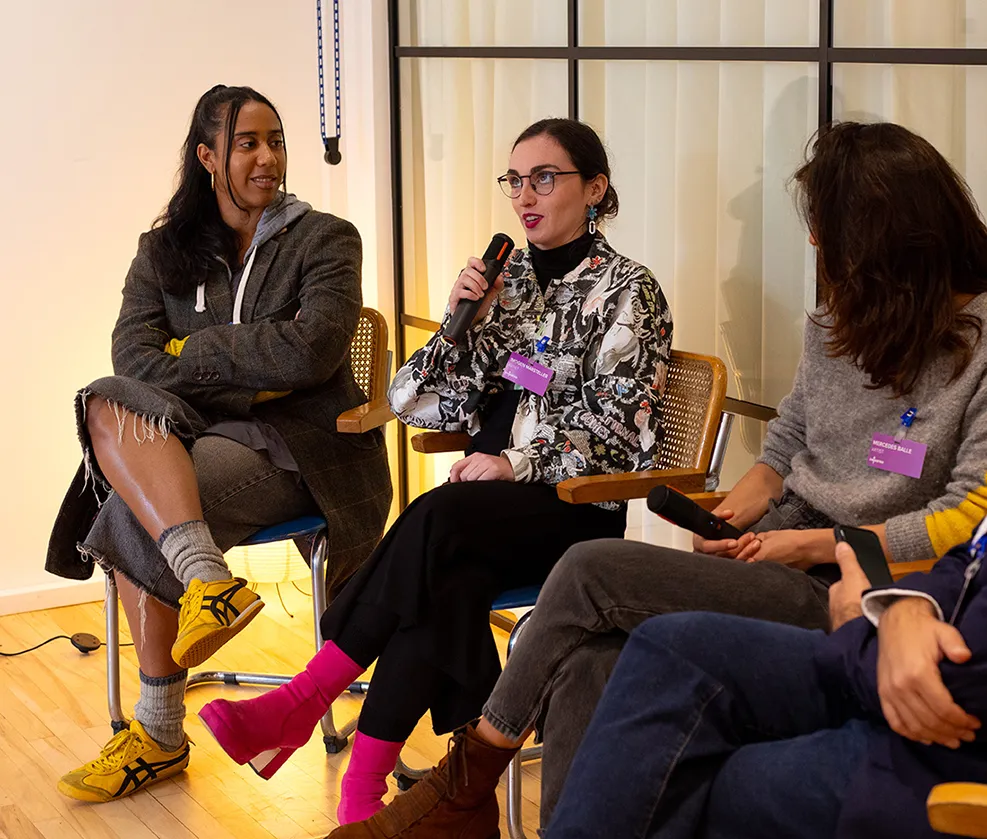
EIM: My family is from the Dominican Republic. I went to university in Los Angeles. Even though it is a Latino city, I felt like I wasn’t experiencing the Afro-Latino environment I grew up with. In my last semester at the University of Southern California, I actually studied abroad in Brazil, where I completed my final term at a university in Salvador da Bahia, which is like the heart of Afro-diasporic culture in Latin America.
I remember telling myself, “I am not going to make art for these six months,” because my undergraduate focus was on sculpture, installation, and performance. I wanted to take a break from creating art and immerse myself fully in the environment that raised me.
Being in Brazil, I felt many connections between the Dominican Republic and Brazil—in the colors, the food, and the way people interacted with each other, even with the language difference. Afterwards, I realized I was deeply drawn to joy in my work, having previously focused on themes of colonization and identity.
Living in Brazil, a place heavily colonized by the Portuguese, I saw people who still found joy every day. That experience really influenced my practice. When I returned home, I began making art again, drawing intuitively. This shift brought a change in my use of color, focusing on expressing joy and a sense of movement.
When I started my MFA at Slade, my practice evolved further. We had a class on somatic drawing, where we practiced free-form dancing, and it was transformative. I wanted each piece to feel like a journey toward joy and transition.
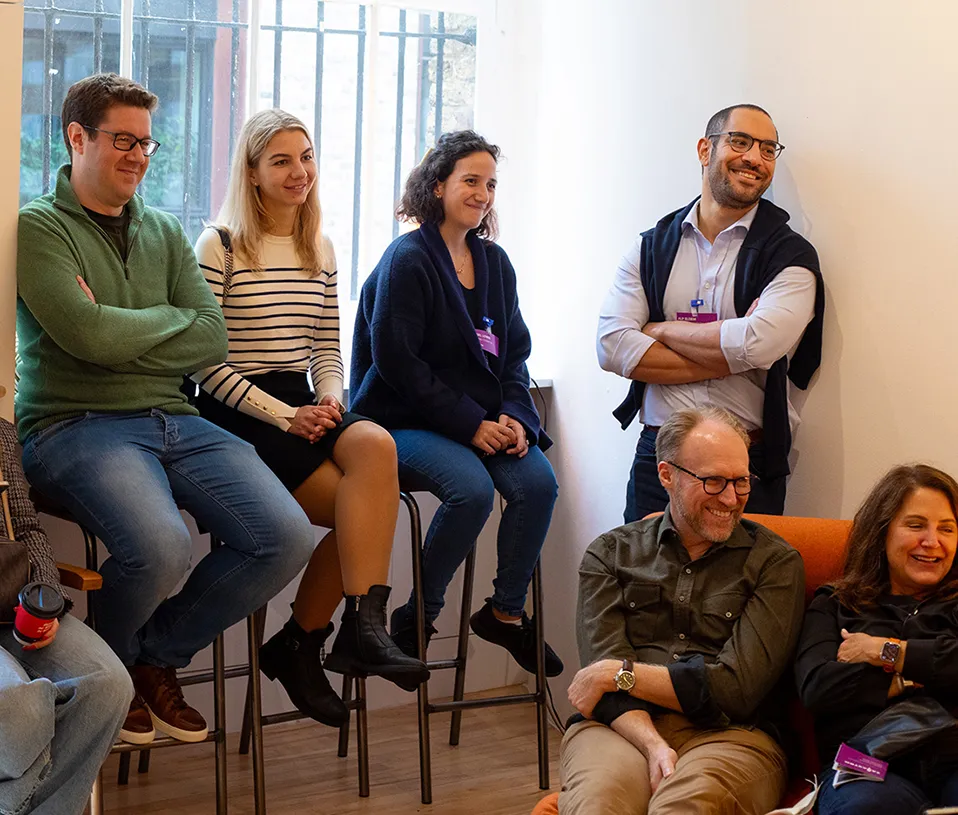
MB: I began as an oil painter, mainly working with landscapes. It felt natural, especially growing up in Mallorca, where landscapes are always accessible. When I came to London to study, it was almost by accident. I had no plans to pursue art seriously, but I ended up taking a course, and one thing led to another.
Eventually, though, I realized that I wanted my work to extend beyond landscapes. I wanted it to reflect sustainability and mortality, particularly after experiencing the loss of family members. Clearing out houses and seeing the sheer amount of “stuff” people accumulate influenced me to explore materials that speak to both nature and decay.
Now, I use materials from construction sites, aiming to evoke nature and portray impermanence. This shift has allowed me to create art that resonates with the cycles of nature and human existence, a message that feels both meaningful and grounding.
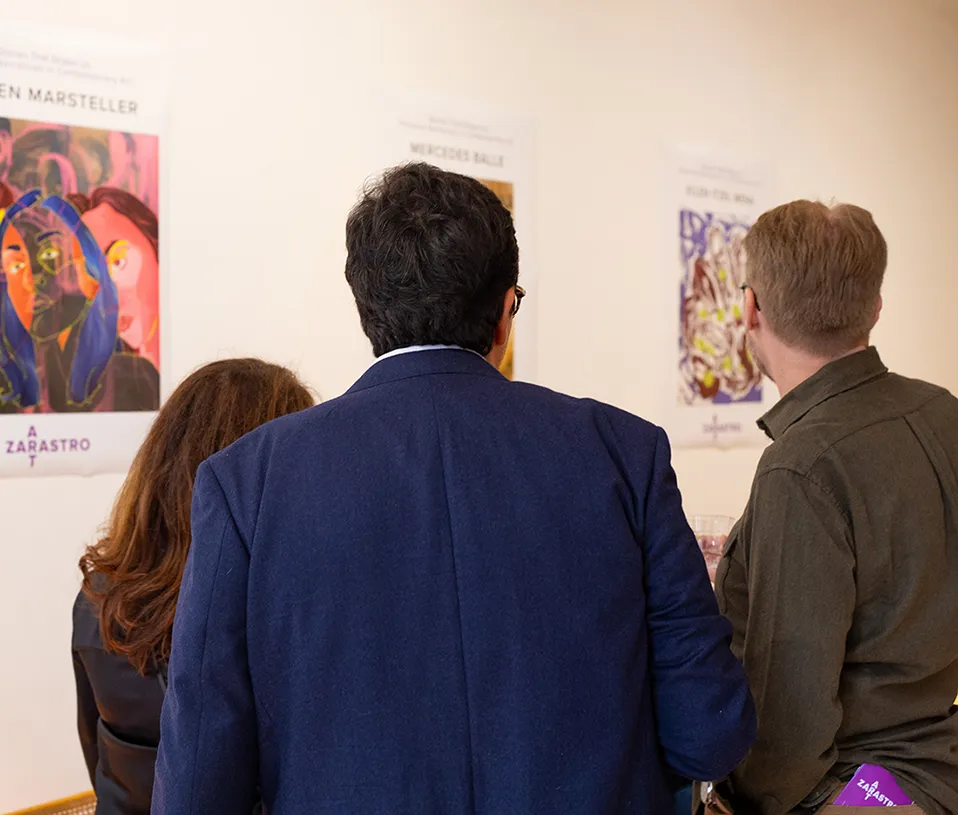
Moderator: How do you define narrative in your work? Do you believe that sharing narratives through art is essential?
IM: I think storytelling is intrinsic to being human. We have told narratives since the beginning of time—through cave paintings, oral traditions, and language. Even though I work in painting rather than film or literature, I aim to capture a snapshot or a piece of a narrative I want to share. Sometimes it is just a fragment of a story, but it reflects the part I feel most compelled to express.
EIM: For me, narrative is a form of communication, especially in painting and visual art. I am not someone who believes in “art for art’s sake.” The work I create is meant to communicate something, much like spoken language does. My work often centers on joy, but it is about a complex, layered joy that invites interpretation. I want each piece to evoke a unique version of joy—a multifaceted narrative that keeps the viewer engaged.
MB: My approach to narrative tends to be more abstract, but I try to use titles and materials to guide viewers toward a story. It is subtle, but for those who engage deeply, the materials and titles reveal more about the themes of my work.
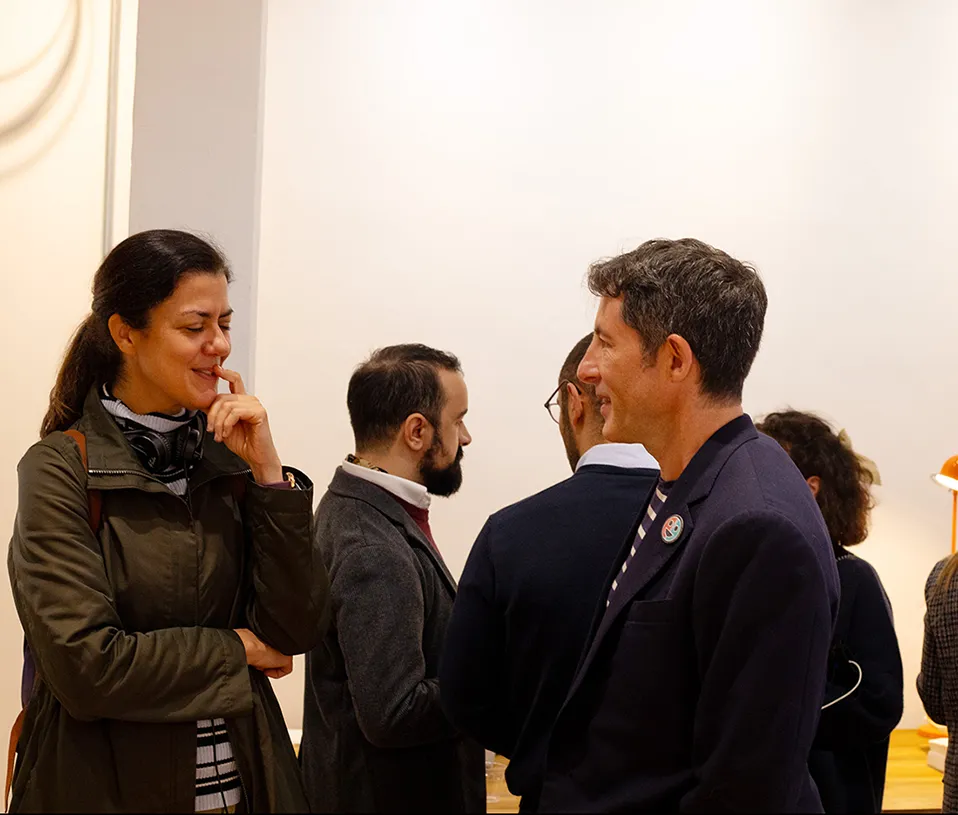
Moderator: How does your identity shape the stories you tell in your artwork?
EIM: One of the things I love about Latin culture is the resilience paired with a desire to find joy amidst hardship. I aim to bring that quality into my work, focusing on joy even while acknowledging life’s challenges. Some people say they can tell I am Caribbean by the colors I use, which I think reflects my identity and cultural background.
MB: It is impossible to separate identity from art. My work often reflects my relationship with materials and the reuse of objects, which I see as a confrontation with consumption and waste. I try to give materials new life in my work, a practice that stems from my experiences with loss and transformation.
IM: My identity is complex. I grew up between Tucson, Arizona, and Cornwall in the UK, feeling out of place in both. This transient upbringing taught me to create my own identity and find community in unexpected places. I see my art as a way to express that feeling of belonging nowhere and everywhere, reflecting my multicultural background.
Moderator: How do you hope your work resonates emotionally with your audience?
EIM: I do not expect people to find happiness in my work, but I would like them to search for it. The colors I use—bright and cheerful—are intended to uplift and invite viewers to look deeper, to find movement and energy.
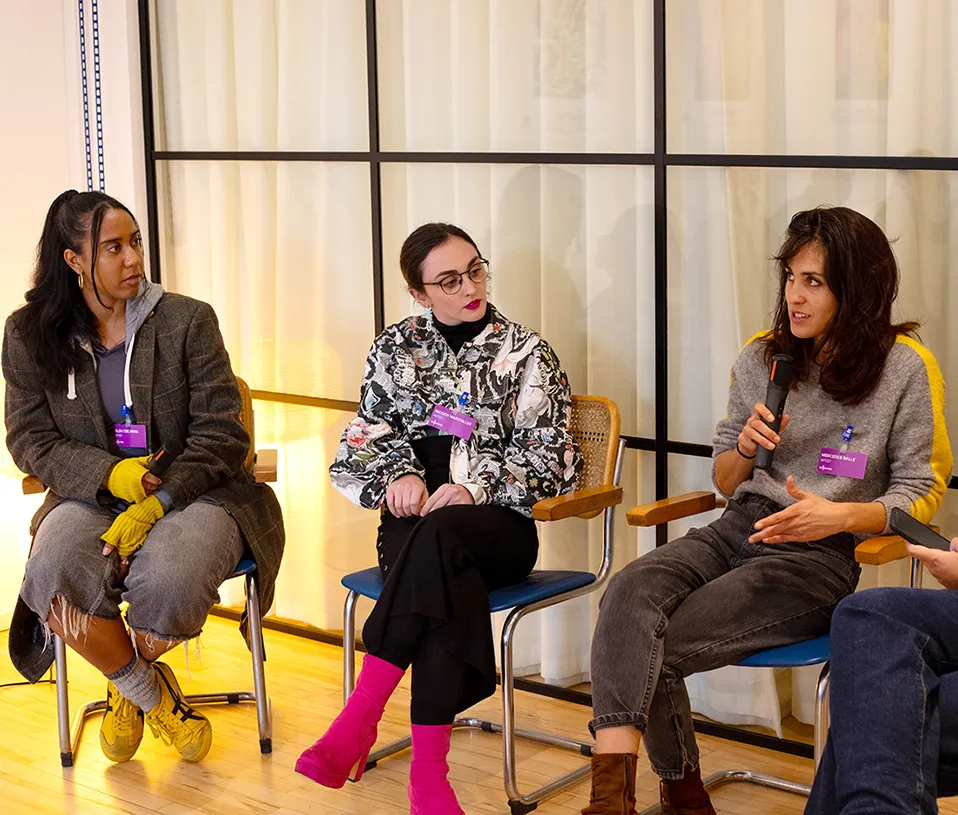
IM: I focus a lot on color too, using vibrant shades to conceal more somber themes. I want people to connect with my work—whether through colors, poses, or titles—and feel that connection beyond just the aesthetic.
MB: My goal is to make viewers question what they are seeing and perhaps feel a sense of discomfort that encourages them to look closer and reflect on the themes of my work.
MB: I use construction materials because they represent impermanence. They are hard to find and not traditional art supplies, so I approach each piece as a conversation, exploring how I can transform the material into something meaningful.
EIM: My materials change depending on the series, as in my series on transformation, where I used burnt-out silk to represent cycles of life and grief. I often use oil bars too, because they feel like giant crayons, connecting me to a childlike sense of creativity that brings joy to my practice.
IM: I work with oil paint for its tradition and tactile nature. Every step in preparing my canvas—from building the structure to layering pigments—is meaningful to me. It’s a process that balances control and spontaneity, mirroring the narratives I explore.
Moderator: Can you describe your creative process? How does your personal experience influence the decisions you make while creating art?
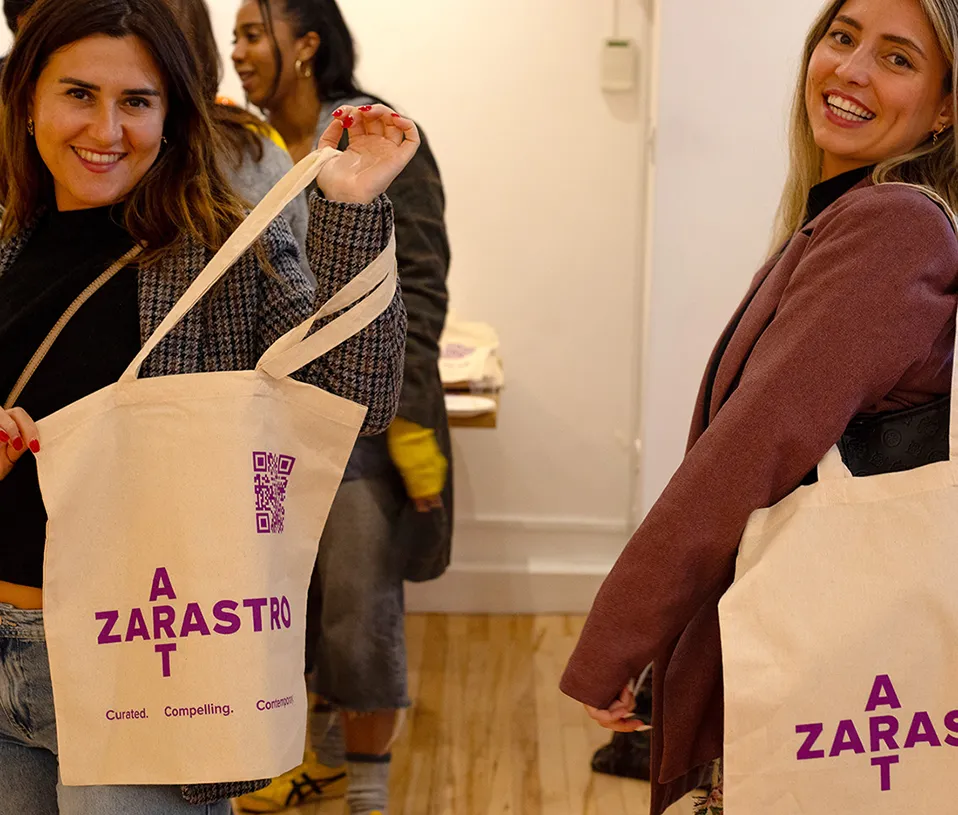
MB: I often find my materials by visiting construction sites or salvaging items, which involves a lot of trial and error. Researching the materials also adds depth, as I learn about their history and significance. Conversations with architects and people familiar with construction are also part of my process.
IM: I constantly ask myself, “What story do I want to tell right now?” I start by jotting down thoughts and phrases, sometimes random ideas that evolve into a larger narrative. Everyday experiences inspire me, as even the mundane can be made monumental.
EIM: I am a very social artist, taking inspiration from daily interactions and emotions. I do not plan compositions; they are intuitive and spontaneous. I have also started drawing more abstract landscapes based on snapshots I take around London, reflecting my love for color and form.
Moderator: What advice would you offer to collectors seeking to understand the personal narratives behind your artwork?
IM: I think collectors are drawn to a piece because they see a narrative, even if it is different from mine. One of the best things is hearing someone else’s interpretation of my work—it can add new layers to its meaning.
EIM: I encourage people to explore beyond the surface. The more you delve into an artwork’s context—such as its cultural background or emotional significance—the more meaningful it becomes.
MB: I think if someone feels a connection with a piece, they’re already creating their own narrative. I include some context in my titles and descriptions to help build a bridge to the work’s deeper meaning.
—
The panel transcript has been edited and condensed for clarity.

